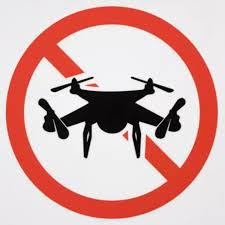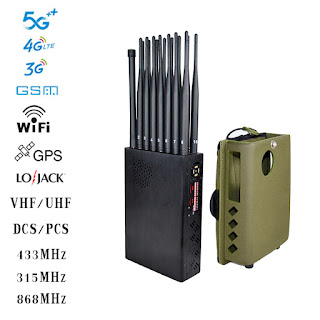Can a Bomber Drone be Prevented from Causing Harm?
A bombing drone, as its name suggests, is an unmanned aerial vehicle (UAV) primarily employed for conducting drone strikes. It falls within a broader classification of combat drones that fulfill various roles such as target acquisition, surveillance, reconnaissance, and intelligence gathering.
Bomber drones, despite being unmanned, are not completely automated. Instead, they are typically operated by humans in real-time from a remote location.
It is evident that there is a significant reduction in weight when compared to conventional aircraft, as all the requirements of a human pilot are irrelevant in this case.
The following is a concise overview of stealth bombers and the mechanics behind their disabling process.

The Myth of Detecting Stealth Bomber Drones.
In an ideal world, bomber drones would epitomize the authentic essence of stealth. As one can envision, this entails evading detection from targets entirely. Any potential compromise could result in an unsuccessful culmination of an ongoing mission.
The US Air Force's RQ-170 serves as a prime illustration of a compromise. In December 2011, an RQ-170 crashed on the border between Iran and Afghanistan. The Iranians quickly seized the wreckage and began reverse engineering their own version of the technology.
The RQ-180 owes its existence not only to the ability to replicate but also to the capability to enhance the original design. These drones are designed to be undetectable spy aircraft, but what does the term "stealth" imply in this context?
The majority of individuals associate drone stealth with its capacity to evade radar detection. While satellites possess extensive visibility, their operational rigidity limits their ability to adapt, thereby playing a role in the incorporation of detection avoidance features in certain designs.
The functioning of radar technology is relatively straightforward. It operates by emitting a signal that reflects off an aircraft, revealing its location and enabling tracking capabilities.
Nevertheless, the challenge intensifies when dealing with drones that possess a compact design, thereby giving rise to the concept of their stealthiness.
The flaw in this myth arises from its failure to take into account the influence of radio frequencies. Without a doubt, attaining autonomous control necessitates a certain degree of communication reliant on frequencies. Nevertheless, it is crucial to recognize that these frequencies can be obstructed through the use of appropriate technology.
However, opting for this approach does entail a higher degree of complexity in contrast to relying on radar recognition for detecting drones.
What are the requirements to deactivate a drone used for bombing purposes?
The equipment available in this location can be categorized into two groups: drone detection and drone disruption. The former is dedicated to identifying drones, while the latter is primarily focused on deactivating the detected drones.
The Best Four Unmanned Aerial System Technologies for Countering Threats.
The use of drones poses a potential threat to both human safety and security. Additionally, they are frequently employed for espionage purposes, gathering sensitive information from secure locations like military installations, and can cause harm by transporting explosives.
The counter-drone technology field has been advancing at a rapid pace, particularly in the military sector. To find out about the top four trending counter UAS technologies, read on.
Meshes
The drone detection solution is frequently employed by militaries to apprehend drones. Once the net intercepts a drone, it halts its movement and forces it to descend to the ground. This effective measure ensures that a drone cannot return to its sender, thereby preventing the leakage of sensitive information from a military station or, worse, averting potential physical harm caused by any explosives it may be carrying.
Advantages of using nets to catch drones include a low risk of harm to the sender or others due to explosions, as well as the possibility of identifying and punishing the sender. Ground-launched net cannons are highly accurate.
One drawback is that drone deployed nets have a lengthy reload time. This means that if there are multiple drones or if the target is not caught on the first attempt, the threat remains.
Radar
Radar employs radio energy for the purpose of object detection. With the aid of radars, the direction and position of a drone can be accurately determined. The majority of radars transmit a radio signal and subsequently receive the echo. Nevertheless, they seldom detect small targets. Originally, radars were developed to track larger objects like passenger aircraft. However, military forces also utilize radars to locate smaller drones that may be present in the vicinity.
Advantages: Radars are capable of covering vast areas, providing precise location information, and detecting multiple targets simultaneously. Given the necessity for unwavering vigilance in defense operations, regardless of weather conditions, radars serve as an excellent solution, even in situations of reduced visibility like fog, darkness, and more.
Drawback: The majority of radars are unable to differentiate between diminutive drones and tiny airborne creatures like bats or birds. As a result, radars may not be entirely effective for military purposes, as they could overlook small-sized drones.
High Power Microwave (HPM)
High Power Microwave devices have the ability to cause interference with other electronic devices, including drones. The radio links that control a drone's movements can be disrupted by the HPM's electromagnetic waves. In some cases, the HPM's high voltage and currents can even lead to the destruction of the drone. This can be useful in situations where a suspicious drone needs to be neutralized to prevent potential harm.
Advantages: Efficient in halting drones that fall within the HPM radius.
Despite its ability to safeguard military bases and highly secure areas, this technology poses a potential threat to other electronic devices, inadvertently causing their destruction. Moreover, HPM has the capability to interfere with communication signals.
GPS Spoofer
Due to the utilization of this advanced technology, a signal is transmitted to the identified suspicious drone, effectively deceiving it regarding its actual location. By constantly updating the GPS coordinates, the spoofer gains control over the drone, allowing for its relocation to a designated "safe zone." Consequently, the potential risks associated with the drone's presence are significantly minimized.
Advantages: GPS spoofers are highly cost-effective technologies, enabling armies to acquire them in larger quantities and deploy them in diverse locations.
Drawback: Regrettably, there is a potential for interfering with other radio communication signals.
The system operator's threat analysis suggests that electronic measures, specifically soft-kill techniques like frequency drone jamming, can effectively counter the UAV threat.
The gps jamming involves the focused transmission of RF power towards the specific frequency channels utilized by the Drone for telemetric, control, and navigation purposes. The actual range of the jamming signal, which relies on factors such as line of sight and power output, can extend up to approximately 5Km or even further distances when employing high power output (>50W).


Comments
Post a Comment